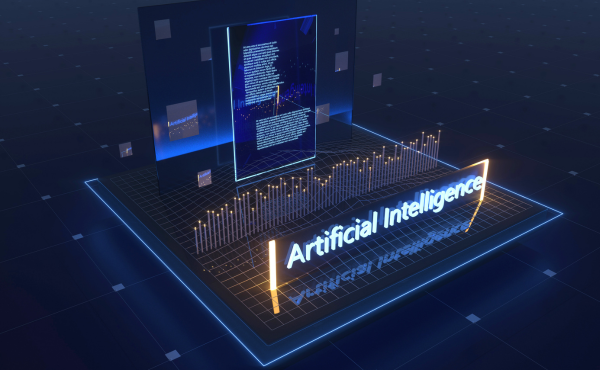Have you started testing artificial intelligence tools in your daily work?
At Kenova, we are continuously making interesting discoveries that allow us to assist our clients in even more meaningful ways when it comes to recruitment.
I would like to share some practical tips to help you integrate AI into your HR strategy to become even more efficient.
Strategic Resource Planning
Recommended Two-Step Approach:
1. Use AI tools like ChatGPT to analyze trends in the Quebec labor market
Here are some emerging needs that we are increasingly seeing among our clients:
- Advanced data analysis and BI (Business Intelligence) skills
- Expertise in artificial intelligence and machine learning
- Digital risk management and cybersecurity
- Regulatory compliance and risk management
- FinTech (Financial Technology) skills
- Expertise in sustainable development and ESG (Environmental, Social, and Governance) criteria
*For instance, when we asked ChatGPT about these trends to compare the results, 80% of them were reflected in its response, which represents a reasonable alignment.
2.Incorporate these insights into your long-term HR planning. This will impact career development plans for your current employees and the skills sought for your future recruitments.
Optimizing the Organizational Chart
Since organizational structures need to be agile to adapt to competition, labor shortages, the economic market, etc., Lucidchart with integrated AI can be an interesting tool to help you fit every puzzle piece in the right place.
The steps are simple:
- Import your current organizational chart.
- Define your restructuring goals.
- Ask the AI to suggest optimizations by becoming more and more specific.
Example of request:
- Optimize this organizational chart to integrate a new team of financial cybersecurity analysts, while maintaining our current flat structure and retaining all employees.
- Here are the strengths and interests of the employees in these teams: (detail here). Ensure that the tasks for each employee are reorganized so that everyone is in the right place.
- How could these employees evolve within this structure?
- Etc.
Point of attention: The AI offers suggestions and different perspectives, which can serve as a foundation to help you think differently and make better decisions. The desired outcome will obviously not be final.
Effective Job Posting Writing
Strategy: Use AI for much faster writing. Generate drafts, then customize them to reflect your company culture.
Steps :
- List the key elements of the position, the selling points of the role, and your company culture.
2. Use tools like ChatGPT or Gemini to generate an attractive draft. Guide the tool towards the tone you want to use (more formal-traditional or more accessible). It should closely align with your actual organizational culture.
3. Review and adjust to reflect your unique voice.
Example of request : “Create an attractive job posting for a Senior Financial Analyst in Montreal, emphasizing our culture of innovation and professional development opportunities.”
Important note : If you have an existing job description for another position (a template you want to keep), attach it to your request to ensure consistency and compliance. If you don’t have a template or want to optimize it, clarify your criteria (concise or detailed, paragraph order, etc.).
Creating Objective Interview Grids
Process for each of your recruitment positions :
- Define your key criteria, priorities, and their weighting.
- Use AI like ChatGPT or Claude AI to generate relevant questions.
- Refine the grid with your HR team.
- Ensure that every interview follows this grid and establish a scoring system for each candidate. This will help with your final decision.
Example of request : For a Financial Controller position, you could weight the criteria as follows: technical expertise (40%), leadership (30%), adaptability (20%), communication (10%). Then ask the AI to generate questions for each criterion.
Key Tip: The weighting reflects your priorities. Make sure it aligns with your specific needs.
Comparative Candidate Analysis
Recommended tools:
- Implement an Applicant Tracking System (ATS) with AI capabilities.
- If an ATS investment is not a priority, you can also use ChatGPT or Claude AI.
ATS Implementation:
- Configure your ATS with your selection criteria.
- Let the AI perform an initial comparative analysis.
- Review the results and refine them as necessary.
Best Practices:
- Always ask the AI to explain its choices. This helps you understand the logic behind the rankings and refine your criteria.
- Do not input any sensitive information, such as candidate contact details, to comply with legal standards (e.g., Law 25).
- Never let a tool make the final decision for you.
*It is important to note that data retention policies vary depending on the AI tools. For example, ChatGPT retains conversation history by default to improve its models (though this option can be disabled), while Claude AI does not use conversations by default for model training. In any case, be mindful of the personal information you share.
Anticipating Career Paths
Use AI, like Claude AI, to identify non-obvious career development opportunities for employees you want to retain long-term.
Process :
- Create detailed profiles of your employees (skills, experiences, interests, talents, personality, etc.).
- Feed these profiles into an AI tool, outlining your company’s vision for the future.
- Ask for personalized career path suggestions.
Example of request : “Suggest three potential career paths for this employee profile in our company, considering our future needs in international tax expertise.” (Attach relevant documents like resumes, personality tests, and interest profiles, ensuring no personal data is included.)
Impact : This approach can reveal forward-thinking development opportunities. You can then discuss these with key employees and adjust as necessary, which is an excellent way to improve retention and internal satisfaction.
Final Thoughts
We believe that integrating AI into our HR processes opens up exciting new perspectives! However, we must remain cautious. The key to success lies in balancing technology with human expertise.
Human-AI Balance: AI tools are there to assist, not replace your judgment. They can accelerate certain tasks and offer new perspectives, but it’s your expertise that will give meaning to these insights. For example, when AI provides a comparative candidate analysis, it’s your deep understanding of the company’s needs that will guide the final decision.
Pilot Projects: Before diving in headfirst, start by testing these tools on a small scale. Choose one aspect of your recruitment process, like job posting writing, and experiment with AI for a few weeks. Evaluate the results: Are the postings attracting more qualified candidates? Is the process really faster? These insights will help refine your approach before a broader rollout.
Innovation Committee: To fully leverage these new technologies, consider creating an innovation committee dedicated to AI in HR. This group could:
- Stay up-to-date with the latest advances in AI for recruitment (it evolves quickly!).
- Test new applications and see how to adapt them to your specific needs.
- Organize training to ensure the HR team is comfortable with these tools.
- Measure AI’s impact on your processes and propose improvements.
- Collaborate with other departments to explore new ways to use AI.
Recruitment teams can now become true innovation labs, helping your company attract and retain the best talent in the market.
Next Steps
- Choose a pilot project: perhaps using ChatGPT for your job descriptions?
- Form a small group to test and evaluate the results.
- Share your findings with the entire team.
- Decide on the next steps: expand usage, try a new tool, or go back to the drawing board.
If you’re short on time, Kenova is always at your disposal to assist you in this journey. Whether you need help setting up your AI tools, training your team, discussing best practices, or even taking over the entire process, feel free to contact us.
Marie-Ève Cloutier, CRHA



